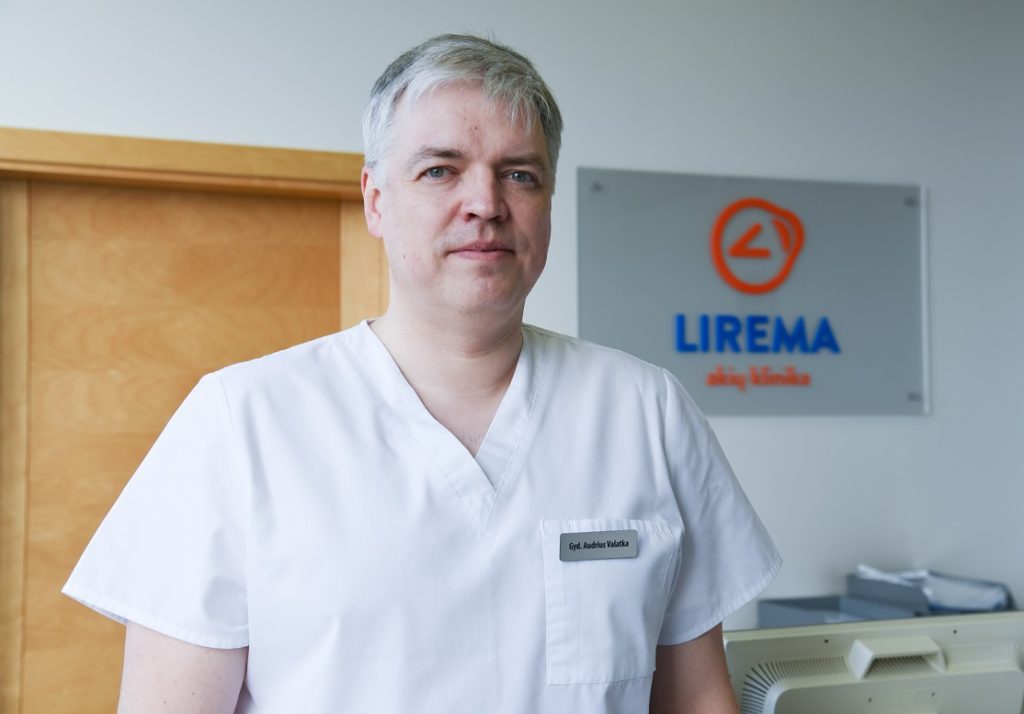One of the most common eye diseases in the elderly is cataracts. Sometimes it is not even suspected that impaired vision can betray this disease. Vision is tried to be corrected with stronger and stronger glasses until the eyes become so weak that they start to interfere with daily life. If there is a delay in contacting specialists, saving the vision cannot be easy.
According to microsurgeon Audrius Valatka of the eye clinic “Lirema”, cataracts develop as the eye lens gradually becomes cloudy. Vision weakens, and the patient may not even suspect that it is not a simple visual impairment that can be corrected with glasses of larger diopters.
“The lens of the eye is made up of water and proteins. When these proteins combine into clumps, the lens becomes cloudy, and light cannot enter the retina, developing cataracts. Vision is impaired, and if neglected, it may gradually disappear altogether,” says the doctor.
Fast and effective treatment
When patients come for a consultation and hear the diagnosis of cataracts, they are first confused, and then they are afraid that such vision will remain for the rest of their lives.
“This is not a judgment. Cataract surgery is a painless procedure of just 20 minutes, during which the cloudy lens is removed through a micro-incision, and a new artificial one is implanted. Vision improves already in the first days, and finally settles down within a few weeks”, microsurgeon A. Valatka shares his experience.
According to him, the result that can be expected after the operation depends on the patient and the lens selected for him individually during the consultation after a full eye examination.
“The earlier the patient comes to consultation and follows all post-operative instructions, the more likely it is that the cataract will not be neglected and it will be possible to preserve the vision he had before the lens clouded. Post-operative vision also depends on the chosen lens,” says the doctor.
Various lens alternatives, from standard lenses to multifocal lenses, ensure comfortable vision at all distances and reduce the likelihood of secondary cataract development.
“The lens is selected according to the condition of the patient’s eyes, individual needs and lifestyle of the patient. If several options are available, it is important to note that after implanting a standard, aspheric or toric lens, the patient will also need reading glasses. If a multifocal lens is chosen, vision is restored at all distances, glasses are no longer needed, or their need is minimal,” clarifies A. Valatka.
Don’t ignore the symptoms
In most cases, patients do not seek help after noticing the first symptoms, but only when their vision deteriorates to the extent that it interferes with their daily life in taking care of the household – when they cannot prepare food or clean the house. Children and grandchildren notice that their parents or grandparents have become apathetic and do not want to do anything due to visual perception. There are no opportunities to enjoy your whole life.
“As the cataract develops, the vision becomes foggy, the colours are more yellowish, it is difficult to drive in the dark, and double vision may appear when looking with one eye. There is an attempt to change glasses to larger diopters, but the first step should be to register for a consultation with a specialist,” recommends the microsurgeon.
According to him, the doctor, after assessing the condition of the patient’s eyes, prescribes corrective measures or the necessary treatment. Trying to diagnose yourself and changing glasses over and over can cost you a lot of money and waste time instead of resolving the problem quickly.
“Cataracts can be prevented if the disease is detected in time, and an elderly person can be returned to a full-fledged colorful life just as quickly,” concludes doctor A. Valatka.
